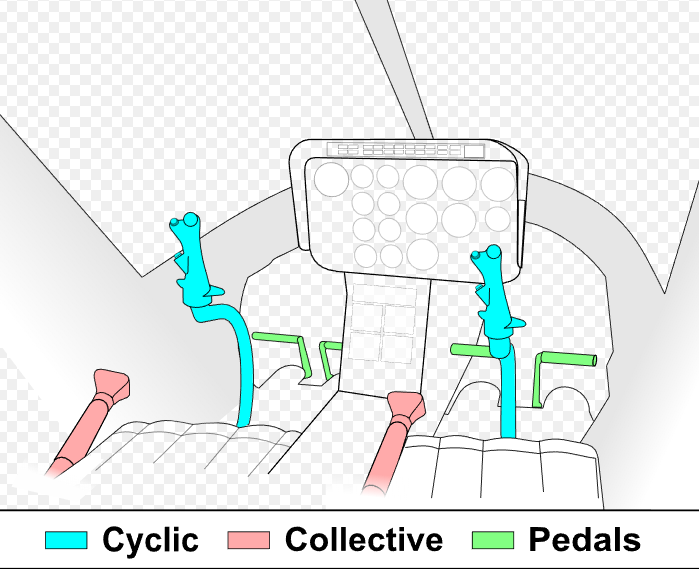¶ Definition
The flight controls are the means by which a pilot controls the direction and attitude of a helicopter during the entire flight.
Changes to the helicopter flight control system transmit mechanically to the main and tail rotors, producing aerodynamic effects on the main rotor blades and tail rotor blades which make the helicopter move in a deliberate way.
¶ Helicopter Main Flight Controls
A typical helicopter has usually three main flight controls:

Helicopter flight controls differ drastically from those found in fixed-wing aircraft. The cyclic pitch control and the antitorque pedals look like an airplane's center stick and rudder pedals but they are not used in the same way.
¶ In Practice
| Flight control | Actions |
|---|---|
| The collective pitch | To Gain/Lose altitude and speed |
| The cyclic pitch | To turn and to gain/lose speed |
| The antitorque pedals | To turn during an hover and to correct the path during the turns |
During a flight, all the flight controls are used constantly by the pilot to correct actions induced by the others.
It's the law of action-reaction: any actions on a flight control produce immediately an aerodynamic reaction and the pilot has to correct this reaction by using the other flight controls.
That's why both hands and both feet are used by the pilot during the entire flight: to make little corrections resulting from his actions on one of the three main flight controls
- None
- VID 514786 - Creation
- VID 200696 - Update
- VID 496402 - Wiki.js integration